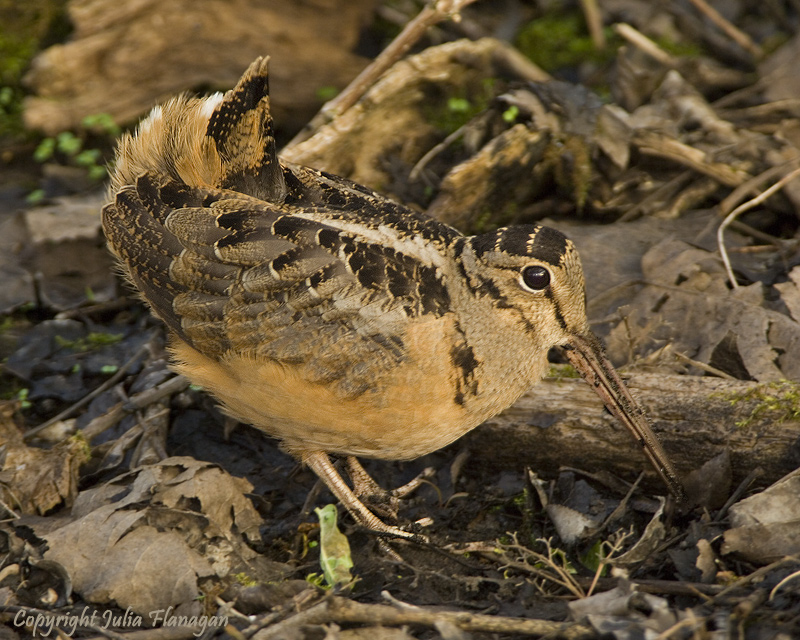 |
|||
|
American Woodcock Despite its large eyes and long bill, this ground-dwelling bird is not easy to see. Its reddish-brown, black, gray and white coloration camouflages it well in the forest underbrush and thickets. It is plump-bodied, 10-12 inches long (larger than a robin) with short legs. Female are larger than males and the young develop quickly. The American woodcock, although a relative of shore birds like the sandpiper, inhabits forests of eastern North Amerrica. In the fall, it migrates to the Gulf states and the southern Atlantic coastal plain. It feeds on earthworms, insect larvae and other invertebrates that it catches in or on moist ground with its bill’s flexible tip. One time that the woodcock may be seen more readily is during the mating display that the males perform at dawn and dusk in early spring. The male spirals up into the air from an open area near the woods, such as a pasture or old field. He circles and then dives down, calling and making a whistling noise with his feathers, to the ground, where he continues courtship of any attracted females. Later, the hen makes a simple shallow nest for several eggs in the leaves and twigs on the ground in nearby brush or thickets. She broods the young for several weeks until they can fly and live on their own. |
Home | Upcoming Events | About Us | Resource Issues | News | Local Contacts Maps | Photos | Publications | Youth Education | FAQ's | Links | Membership |





